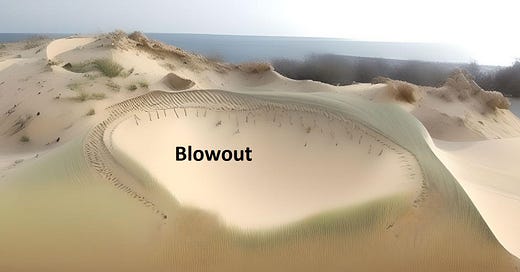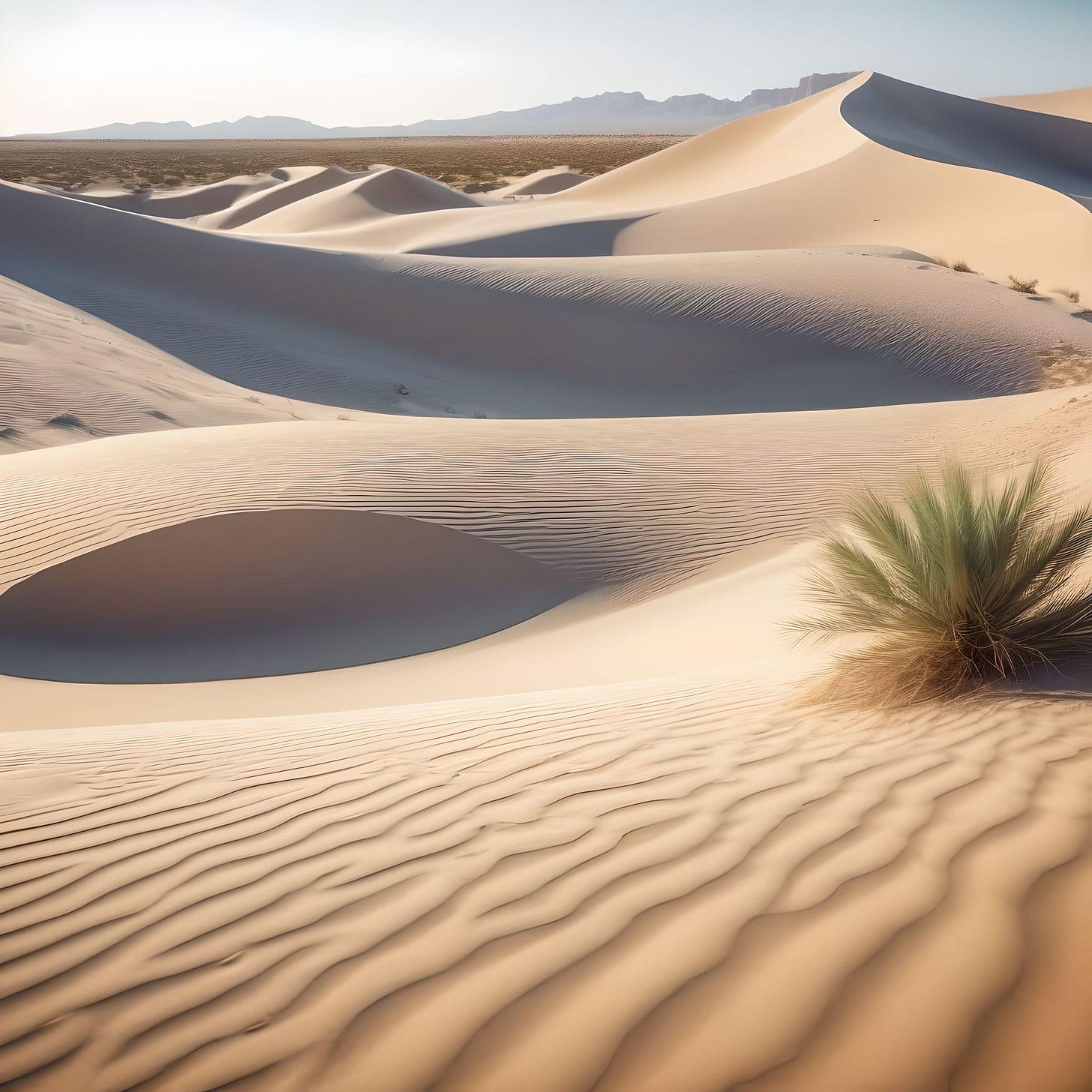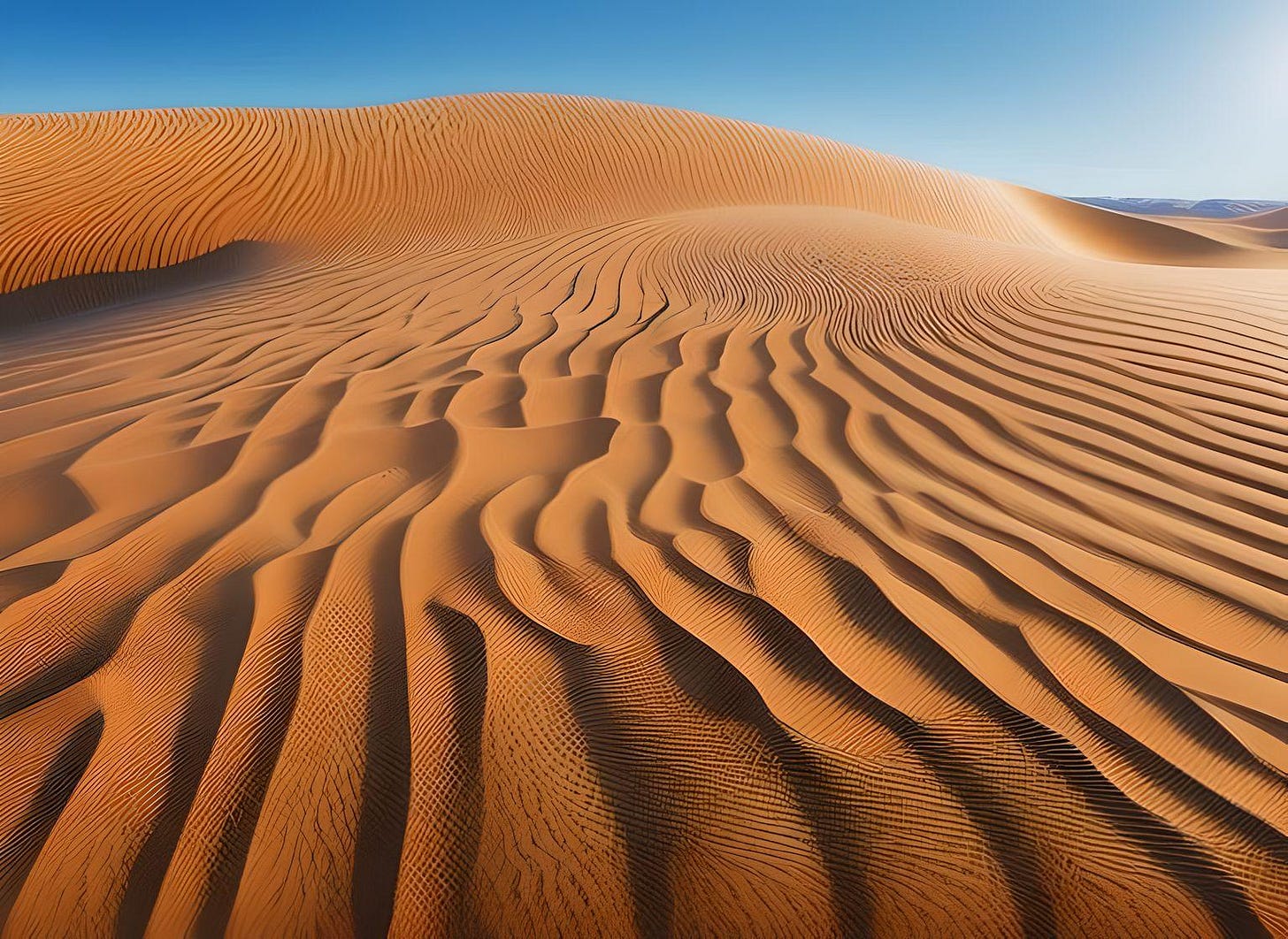Deserts, with their stark beauty and seemingly unchanging landscapes, are constantly being sculpted by a powerful unseen force: wind. Far from being a passive environment, deserts are dynamic canvases where wind acts as a sculptor, carving, transporting, and depositing sand and rock to create a unique array of landforms.
The Erosive Power: Deflation, Abrasion, and Attrition
Wind's primary role in desert landscapes is erosion. It carries out this work through three main processes:
Deflation: Imagine a powerful sandblaster scouring the desert floor. This is deflation, where wind removes loose particles, lowering the overall surface level. This exposes underlying rock formations and creates vast, flat expanses called deflation plains.
Abrasion: Wind doesn't just remove; it also carves. As windblown sand acts like sandpaper, it abrades exposed rock surfaces, smoothing out rough edges and polishing harder materials. Over time, this relentless process can create distinctive wind-etched features.
Attrition: Picture a constant grinding action. As windblown sand particles collide with each other, they wear down and become smaller and smoother. This attrition contributes to the formation of finer-grained desert sand particles.
These combined effects of erosion are evident in various desert landforms. Wind can carve out shallow depressions called blowouts, or hollow out softer rock layers, leaving behind resistant formations known as mesas and buttes.
The Creative Force: Sand Dunes - A Dance of Erosion and Deposition
While wind erodes, it also builds. As the wind picks up sand particles, it sets them in motion in a process called saltation. These bouncing particles eventually come to rest, forming ripples and dunes. Dunes are constantly shifting and evolving, their shapes dictated by the prevailing wind direction. From the majestic crescent-shaped barchans to the sinuous linear dunes, these ever-changing landscapes are a testament to the dynamic nature of wind-blown sand.
Beyond Sand: The Birth of Yardangs and Rock Pedestals
Wind's influence extends beyond sculpting sand. In areas with exposed bedrock, wind can erode softer layers at a differential rate, creating dramatic landforms known as yardangs. These streamlined rock formations, often resembling streamlined ships or fins, are testaments to the power of focused wind erosion. Wind can also isolate harder rock features, leaving behind sculpted rock pedestals where surrounding softer material has been eroded away.
Conclusion: A Desert in Motion
Wind is not merely a visitor to the desert; it is a resident sculptor, relentlessly shaping and reshaping the landscape. Its erosive power carves canyons and exposes hidden rock formations, while its ability to transport and deposit sand creates ever-evolving dunes. Understanding wind's role allows us to appreciate the desert not as a static scene, but as a dynamic environment where erosion and deposition create a breathtaking and ever-changing landscape.










